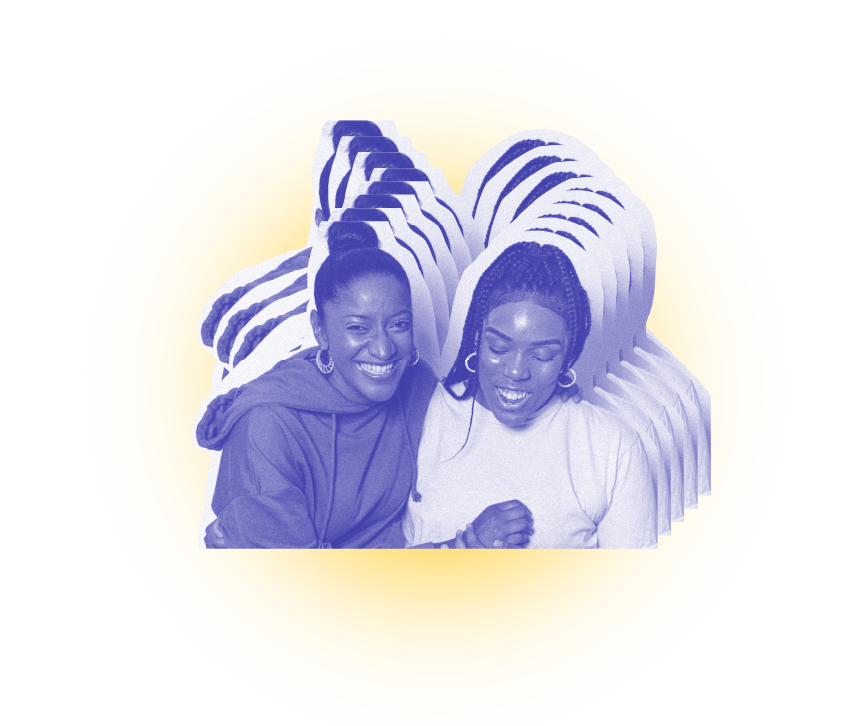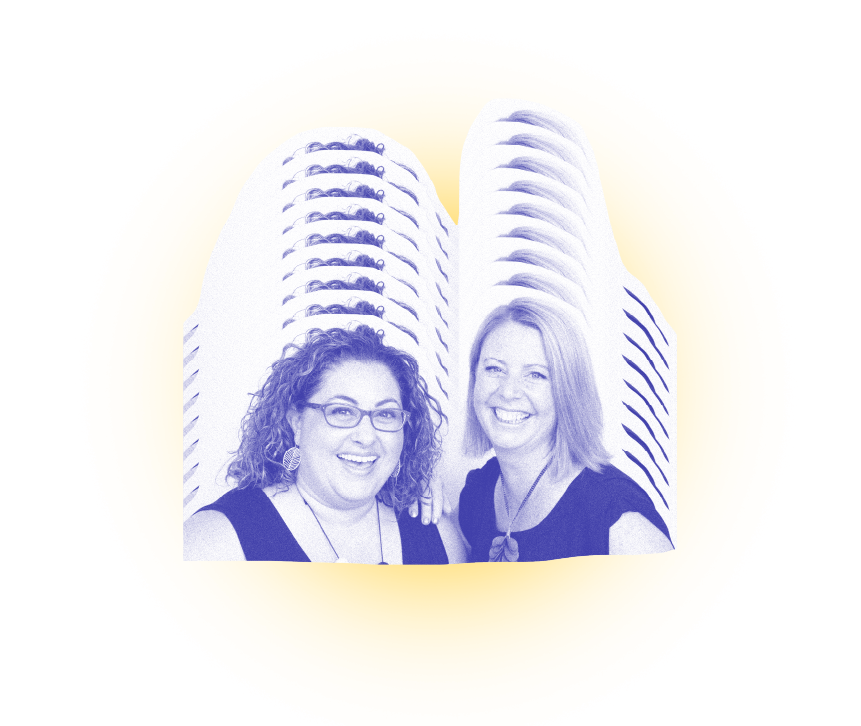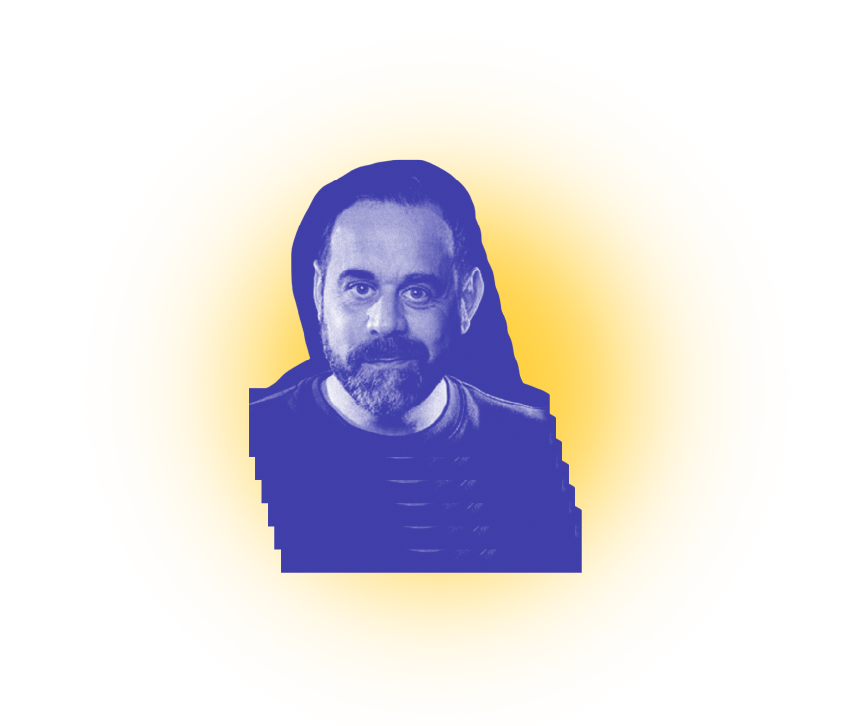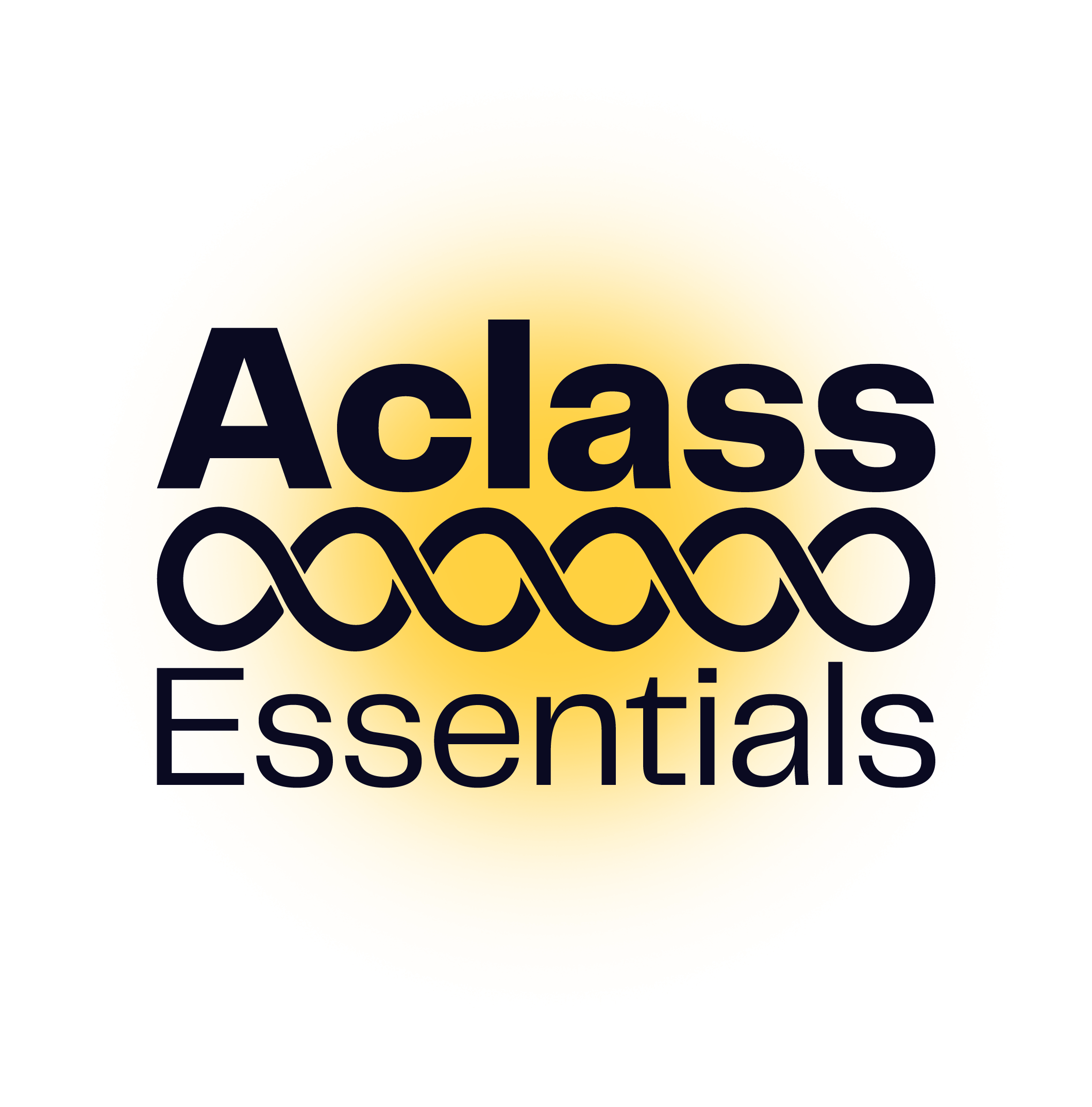Research & Scripting
When it comes to creating a podcast, good things come to those who plan. Learning how to effectively research and script an episode of your show is crucial to building trust with your audience. If you know what you’re talking about – and sound good saying it – the rest will follow.
How to find the right format
Someone ancient once said, “know thyself”; perhaps foreshadowing, by a few thousand years, the importance of knowing what format your new podcast should take. Deciding a format dictates both the structure and nature of your show. Popular podcast formats include interviews, roundtable discussions, TV-show recaps, storytelling and daily news shows, but there’s plenty of room for bold new ideas.
Once you’ve settled on what type of show you’re making, you can drill into the specifics. Will you always open with a short monologue, before moving into your guest interview? Will there be a weekly round-up of listener questions at the end of every show?
You might already have an idea of your format. If you don’t, take some time to listen to some of your favorite podcasts. Make a note of what type of show you think they are, and how they’re structured. That said, while it’s helpful to take inspiration, it’s also good to think outside the box. Just because it hasn’t been done before doesn’t mean it won’t work.

“I think it’s very, very helpful to have a set format for each episode and for each individual podcast! Every minute doesn’t have to be planned but in general you, your guests, and your listeners should know what to expect. Consistency is good! Think about shows like Jeopardy that have stood the test of time. Reliable format plus predictability in structure highlights the variability in content. For Moms Don’t Have Time to Read Books, I always has the guest’s bio followed by a conversation that starts with them describing what their book is about and ending with advice to aspiring authors. For SexTok with Zibby and Tracey, we chitchat for a minute followed by my reading three anonymously sourced questions that she answers, followed by a tip or challenge of the week. Every show needs a structure! ”

How to write a script
If you’ve got a story worth telling, then you owe it to yourself to write a script. Even if you’re planning on speaking from the heart, it’s important to have at least a general idea of what you’re going to say. You’ll save yourself from extreme rambling and keep the show focused. If you’re telling a more complicated story, this work becomes even more important.
First up, you need to understand your audience. Who are they, and why are they listening to your podcast? This will inform the tone of your script, but also how much research you need to do.
If you’re speaking to a niche fanbase, they’ll know their stuff so you’ll be able to go into much more detail (and will need to prepare accordingly). Likewise, if you’re speaking to a broader audience about something they don’t know much about, you’ll need to cover the basics and potentially tell your story in a simpler way.

“Staying across the news cycle is absolutely crucial - if you're already aware of news as close to it breaking as possible, it's a massive help. It gives you the necessary time to formulate the show's own thoughts on the subject. These can then be informed by opinion pieces by others in the industry. From there, it's easier to judge what our listeners want to hear.”

The script itself should provide the blueprint for your episode – guiding you on what to say when, and giving the whole show its shape. How closely you want to script yourself will be a question of style. Some people find it useful to script themselves word-for-word, particularly when they’re explaining or introducing more complex matters. It helps keep things considered and saves the subject from getting lost in the talk.
Then again, if you’re presenting a more informal conversation, a bullet-point script, reminding you what to discuss next, might do the job.
How to begin (and end) every episode
There’s no set way to begin and end a podcast. Your intro and outro will depend on the content, tone and format of your show. There are, however, some things to consider when recording yours.
The intro is a deceptively important part of your episode. Remember, for many people this will be the first time they’ve ever listened to your podcast – and if they’re not engaged by the first couple of minutes, there’s every chance they’ll switch to something else. It’s your chance to set the scene and convince them to stick around. Explain who you are, the overall concept of the podcast, and maybe a note on who the intended audience is – a show for “hockey enthusiasts” or “people who want the stories behind the headlines”. Now you’ve set the scene, you’re ready to introduce this particular episode, previewing everything your listener has to look forward to.
By the time your listener gets to the outro, they’ve already enjoyed the good stuff, so keep it snappy. Thank them for listening and then let them know all the ways they can continue to engage with the podcast now the episode has finished: follow the show, leave a review, find us on social media, and so on.
We’ll go into this more in our monetizing tips, but the end of the podcast is a great opportunity to build a loyal listener base. Leave a good impression by teasing your next episode and welcoming them into your community.

Interviewing
It’s fair to say almost every podcast relies on interviewing. Whether you’re hosting a laid-back long-form chat, or investigating corporate fraud, your ability to connect with people – and conduct productive, probing conversations – will be key to unlocking the story.
How to approach someone for an interview
Once you’ve settled on who you want to interview, the next job is inviting them onto your show. How easy this is will depend on who your chosen guest is. Most public-facing people offer means of contacting them on their website, either via a form or an email address. It’s generally wiser to reach people through these options, rather than inundating them with DMs on their personal social media accounts. If you’re really shooting for the stars and your potential guest is too famous to leave their email address lying around the internet, it might be that you have to approach them through their agent or publicist.
How to write the perfect invitation email
You’ve got their email. Now, what do you write? The most important thing to remember is to keep it personal. The best podcasts are passion projects, and there’s no point pretending you’re a major production, so tell them who you are, what your podcast is about, and why their work is interesting to you.
Be clear about what you’re asking for. How long will the interview be? Where will it take place? When, roughly, would you like to talk to them? And what exactly do you want to talk about? This last one is especially important as it will give your guest a chance to prepare for your chat. Be upfront about what you want the conversation to involve, and your style of interviewing.
How to research your guest
Everyone has their own preferred methods for researching their guests, and you’ll figure yours out over time, but there are some basics that can get you started.
The internet can be super helpful for building basic biographical information: birthplace, rough age, and the key points of their career or life story. You might even be able to gather a brief bit of color on their personal life if it’s publicly available (don’t go looking if it’s not). Get these bullet points down before anything else. If there really isn’t much information about your guest out there already, email and ask them if they have a bio they could send you in preparation for your conversation. It’s not rude, you’re just doing your job.
Next, dig out a couple of their previous interviews. These might be other podcasts, or features in magazines or newspapers, and will help you get a feel for their “story” – but make a note of what they don’t get asked about, too. Good interviews should cover new ground.
Finally, three words: Read. The. Book. Granted, not every guest will have written a book, but no matter who you’re speaking to, the principle remains the same. If you’ve invited someone onto your podcast to speak about their work – especially if they’re promoting something – it’s very important you’re actually, you know, familiar with it. Pretenders will be caught out.

“It's everything. I try to enter the guests' world for as long as I can in the build up to the record day. Whether it's reading their book/s, watching their films or TV's shows, watching talks they've done or old interviews to try and get a loose understanding of their life. This essentially makes me feel safe as I know that whatever area of life they talk about I'll have a rough idea of the context. I also leave room for me to learn something about them so I'm not looking to know everything in the lead up.”

How to plan for an interview
Time to prepare for the big day.
When writing questions, it can help to break them down into sections. For example, you might decide to divide the conversation between questions on your guest’s upbringing, then their new book, and then their wider thoughts on a topical issue their work touches on.
Bear in mind how long you’ve got with your guest. If you’ve only got half an hour, you’ll want to prioritise the stuff you really want to talk about, rather than spending half your time on what they had for breakfast.

“You need to be emotionally aware of your interviewee throughout the planning and interviewing, and afterwards too. So, first chat to them, for example on an informal phone call and no recording, where you can ask some very open questions and discuss with them about what you’ll talk about during the recorded interview. This helps them to feel comfortable with you as a producer/interviewer/human”

Try to write open questions, rather than simple “yes or no” ones that seek to confirm what you already think you know. “What’s your earliest memory of hearing a jazz record?” is better than “Did you like jazz growing up?”
Finally, remember that the key to a good interview is making a meticulous plan that you’re prepared to abandon completely. If the conversation takes an unexpected turn, follow it.
How to nail the perfect interview style
Before you start recording, give your guest a quick rundown of how you’re planning on structuring the conversation and make sure they’re happy with it. From there on in, keep it personal and relatable. There’s no need for formalities unless you think the subject matter really calls for it: it’s a podcast interview, not a job interview.

“The Dope Black Women podcast is intended to be a safe space for black women and black non-binary people to share their stories. We have a reputation for creating an environment that makes our guests feel like they are having a casual conversation with an old friend. There are several ways we ensure this happens, one of which includes speaking with the guests beforehand in order to build a rapport. Another is making sure we are across the subject and the person whom we are interviewing. We also brief the guests beforehand so they know what to expect and we encourage them to show up as their most authentic selves. We noticed that sharing as much of ourselves as possible and being vulnerable on the podcast and with our guests also helps people to feel like the conversation is natural. Beyond asking questions, we find ways to connect with the topic personally and share our own perspectives. We also try to strike a balance between serious and light-hearted.”

Once you’ve asked a question, let your guest speak. It’s fine to nod and smile to encourage them to carry on, but try not to speak over them – avoiding even the occasional “yeah”, if you can help it. You’ll thank yourself in the edit.
Recording
At last, the bit you’ve probably been most excited about: actually recording your show. This is where the fun should really begin, provided you’ve got the gear (and ideas) to get you and your guests sounding great. If you know how to use it, there’s no reason why entry-level equipment can’t do the job.
What microphone should I use?
Finding the right microphone doesn’t have to mean breaking the bank. There are different levels of price-point depending on the type of microphone you opt for, and each category comes with its unique selling-points and downsides.
If this is your first foray into the world of podcasts, you might decide to start with an Entry-Level USB Microphone – for the time-being at least. They’re simple to use: plug one of these mics into the USB port on your laptop and it’s normally as straightforward as “hitting record”. However, most computers won’t be able to record from two USB mics at the same time, making these great for solo shows but more limiting if you have a co-host or guests.

“Knowing your audience is our best tip for prepping for a podcast recording. Whether it's your first episode or your 300th, prepare how, when and what you share, keeping your listeners front of mind. We feel connected to our listeners so we're not just talking to each other when we record, we're talking to them too. From a practical perspective we try not to record when we're rushed or stressed as that will show through in our recording. We turn off all distractions and give the podcast our full attention to bring the greatest quality content to our listeners.”

If you feel ready to up the budget a little, you might go for a Mid-Level Dual Output microphone – a mic that has both a USB output as above, but also an XLR output, making it compatible with external devices like an interface or mixer. Interfaces and mixers work between your microphone and the audio workstation on your computer, allowing you to record from multiple mics and better control levels. This is another bit of kit to consider as you expand your home studio set-up.
You might eventually decide you want to go for a much more complex, professional-grade microphone. Bear in mind, however, that more expensive doesn’t necessarily mean better here. Professional-grade mics are great if you’re in a studio, but if you’re recording from home – as many podcasters are – they might do too good of a job, picking up lots of atmospheric noises that would otherwise go unnoticed.
How to master remote recording…
If you’re interviewing guests on a regular basis, the chances are they won’t all be able to meet you in person. Being able to record remotely opens up a world of possibilities, giving you access to higher-profile, in-demand and even international guests.
Recording a conversation remotely will rely on using third party software. You’ll probably be familiar with Zoom. But you may not know that the video calling software makes it very easy to record a conversation, by simply pressing the record button at the bottom of the screen once the call has started. Be aware that the file that downloads automatically will be an MP4, which you’ll need to convert to a MP3 or WAV file before you can edit it into your show. Zoom calls can also sound very compressed, so you might not get the audio quality you’re after.
Zencastr is a popular option among many podcast creators thanks to its straightforward, user-friendly interface. Better still, link it with a Google Drive or Dropbox and it will download your audio files automatically after every conversation. You can download and use it for free with certain limitations or, alternatively, pay a monthly subscription fee to access the full service — giving you the option to download higher quality WAVs.
Squadcast is a more expanded interface than Zencastr, and is probably better suited to the more experienced podcast creator. However, once you feel more at home with your craft, it may be an option worth exploring. Squadcast is a little more pricey, with monthly plans ranging from $10 to $150 for audio only (after a week-long free trial).
Finally, Riverside.fm sits in a similar bracket to Squadcast with a little more focus on video recording. This makes it a great option if you’re planning on hosting videos of your interviews alongside the pod. Plans cost between $9-$24 a month, and the free trial for this one only lasts an hour.
How to master mic technique
Having a microphone is one thing. Knowing how to use it is what really matters. Fortunately there are a few simple rules that will make sure you always get it right.
First, you need to be the right distance away from the microphone. Opinions differ on precisely how many inches away you should be, but as a red line you should be at least a full hand-span away. Once your mic is connected to your computer, you can test out levels by looking at the waveforms on your audio workstation when you talk. If they’re maxing out, you’re too close. To get the most out of everyone talking, every guest on the podcast should have their own microphone.

“This is going to sound ridiculous but make sure it’s plugged in and selected! It’s embarrassingly common to have a great mic in front of you doing nothing as you have your computers built in mic still selected in your DAW. Once that’s sorted, make sure you’re not coming in too hot and causing distortion, then simply try to keep a fairly consistent distance from the mic (facing it rather than talking away from it).”

Now you’ve sorted the distance, it’s important this remains consistent. Try not to move closer or further away during the recording, otherwise your levels will vary across the session. You might find it easier to stay in one place if you’re sitting down, but some people also prefer the way they sound when they’re standing up – so don’t write it off if you can make it work. It’s also very important not to touch the microphone during the recording, as this can create noisy interferences.
Finally, it’s worth getting acquainted with plosives. A plosive is the sound your mouth makes when you say a word with a hard consonant, like a P or a T. The air you push out forming these letters can prove too much for your microphone to handle at such short range, creating a fuzzy distortion on impact. The easy fix for this is to buy something called a pop filter, a small barrier that sits between your mic and your mouth. They don’t cost very much and will save you a lot of stress in the edit.
How to make the most of your environment
We don’t all have access to recording studios — and, besides, some of the best podcasts in the world are recorded in bedrooms and kitchens. The key is making the most of your environment.
If you’re recording from a room in your home, it's a good idea to turn on your mic, put some headphones on, and listen to the ambient sounds without anyone talking. This way you’ll pick up on any background noises it might be worth getting rid of: the drip of a tap or the vibration of a washing machine, for example. Audio quality will also be affected by the size of the room you’re recording in, and what’s in it. A larger, emptier space can sound echoey as sounds bounce back, while a smaller, carpeted room with lots of furniture will help absorb the noise.
If your podcast involves reporting on a story, for example, you may want to record interviews or snapshots of audio on the move. While you won’t be able to capture the same quality of audio as a proper microphone would, you can get good-enough quality sound using something as simple as the voice notes feature on most phones. You might decide to take this one step further and invest in a portable microphone or dictaphone, which can take the quality up another level. If you think you’re going to be outdoors a lot, it’s worth investing in a foam windscreen as well. These are low cost and will save you a lot of background interference.
Wherever you record, don’t forget that atmosphere is part of the appeal of many shows. If you’re recording from your kitchen, build that into the podcast. As long as the audio is clear, people will appreciate being welcomed into your home.
Editing
Recording session complete. Only now you’ve got hours of uncut conversation, blips, bloopers and unrelated conversational tangents to deal with. Time for the edit. This is where the magic really happens, as your podcast is transformed from an idea into a fully fledged audio experience. All it takes is the right software — and the killer instinct it takes to cut, cut, cut.
What DAW should I use?
We’ve made a couple of references to audio workstations already, but if those words have had you scratching your head, don’t worry. DAW stands for Digital Audio Workstation, and is the software you’ll use to record and edit your show.
There are a variety of different platforms you can use, and you’ll likely change DAW during your journey as a creator. Here, we’ve outlined some of the most popular options so you can get to grips with what’s available.
The most tried-and-tested option for first-timers is Audacity. It’s easy-to-use, free to download for PC and Mac, and provides you with everything you need to record and edit a podcast. Another option at this level is Garageband, which used to come as standard on all Macs and is now available through the app store.
If you feel you’ve graduated beyond Audacity and Garageband, you might decide to go for a mid-range option like Adobe Audition. It’s a level-up that will cost you – $20.99 per month at the time of writing – but many feel like one that’s necessary for producing audio to broadcast industry standards.
If you still don’t feel like you’re achieving the quality you’re after, you might want to upgrade to a professional DAW. These come at a considerably higher cost, but will provide you with even more precise tools for podcast production. Hindenburg Pro is a tool specifically geared towards voice-recording, setting it apart from more general audio workstations – it can be licensed as a subscription for as little as $120/year or $12/month or a perpetual option for $399. Then there’s Pro Tools – perhaps the most advanced DAW available. It’s complicated software to master, but can open up a lot of options if you’ve got the time – it starts at $299 a year.
How to edit your show
Mastering the edit is something that will take a lot of time and practice, but there are a few principles you can take into your early shows.
How much you need to edit will depend on the nature of your podcast. If it’s a long-form interview, you might not need to edit much at all – simply “topping and tailing” the beginning and the end and adding an intro and outro might do the job. However, if your show features different sections, or you’ve recorded a lot more than you intend to use, you’ll probably need to make a few cuts.
First, listen back to everything you’ve recorded. Make notes of timestamps, marking the sections in your files that you want to use or cut. Once you’ve got this list, you can more easily return to your master files and start chopping things up. Before you start this process, though, don’t work from your one and only master file. Have a back-up of the original recording saved somewhere, just in case. And remember to keep saving your edit as you go.
Once you’ve started chopping your files down and dragging them into order on your DAW, your episode should start to take shape. If you’re cutting big gaps, you might find that the conversation jumps around slightly unnaturally. This is where a simple piece of transition music or jingle can help things run smoothly – you should be able to find some royalty-free music on the internet, but make sure you’re only using something you have explicit permission to use.
Remember, you don’t necessarily need to edit out every stutter or stumble. People appreciate natural-sounding presenters — it’s one of the many things that can help a podcast stand out. It’s better to have a well-planned and scripted episode that features a few “ums” and “ahs”, than a well-spoken but sprawling conversation that lacks focus.
How long should my episode be?
Much like a piece of string, there’s no definitive answer to this question. That said, some general rules apply when it comes to finding the right running time.
Shorter running times (15-30 minutes) tend to suit more topical, reactive podcasts. Many of these shows are daily so cover less content and are produced at a faster rate. If your show is just you talking about the day’s current affairs, this might be the category for you.
Podcast episodes closer to the hour mark are the most common and popular format, with many hitting an average time of around 45 minutes. This is a good amount of time to get stuck into a conversation or story, without people losing interest or running out of commute or bath-time in which to listen.
Some podcasts might merit going beyond an hour – very in-depth interviews or episodes that have been recorded from live events, for example – but be wary of the mega-pod. Ask yourself: is this running time justified?
However long you decide to go, remember that podcast popularity comes with consistency: so try to stick to the same length (or thereabouts) every episode.

“Apart from the obvious coughs and microphone knocks, the key for me is to remove anything that affects the flow of the episode and takes you too far off topic. Tangents are all well and good and podcasting is the perfect medium for deviation, but a lot of your listeners will be tuning in for the matter at hand, not an irrelevant or self indulgent story about a dream you had last night. That said, you don’t want to cut out everything as that can make the edited version feel disjointed and unnatural. Be ruthless, but be sure to listen back to the sections you edit heavily to ensure they still flow nicely.”

How to share your finished podcast
The edit is complete. All that’s left now is to upload the finished product to a podcast hosting platform, like Acast. Acast is your one-stop podcast hosting platform for reaching your audience anywhere, any time, across any podcast listening app — including Apple Podcasts, Spotify, Amazon Music, and hundreds of others. Acast also provides analytics to help you get to know your audience, as well as options for monetization — more on that later.
How you go about exporting your final file will differ depending on your DAW, but mostly the export option will sit under the File menu on the toolbar at the top of the screen. When it comes to what sort of file you export it as, MP3 and M4A are the only audio file types supported by podcast apps — so make sure you choose one of these. Acast supports both.
Your DAW will most likely also give you the option of what quality audio you want to export, in the form of “kbps” units. This refers to how much information (in this case audio) is transferred per second. The higher the bitrate, the better the quality. However, higher bit rates also mean bigger files, which can be more difficult to download and play back for you and your listeners. We’d recommend uploading 128-160kbps MP3 files, which offer a decent compromise of good quality and small file-size.
Most people use the Apple Podcasts app to listen to podcasts, and Apple limits podcast files to 150MB. To help podcasters avoid this issue, Acast sets the internal limit on our hosting platform to 150MB also, so if yours is too big, you may need to go back to your DAW and re-export it at a lower bitrate.

“My time saving podcast editing advice is to get comfortable at listening back at double speed, you can start by slowly creeping it up at x1.2 at first but if you can get through the episode it’s going to save you heaps of time. Having the right DAW for you and familiarizing yourself with it is very important, I will always recommend Reaper for editing podcasts. And our biggest time saver is a program called Auphonic which cut down our post-production by about a billion percent.”

Promotion & Growth
So, you’ve researched, scripted, recorded and edited the first episode of your podcast. Your next challenge is to get people to listen to it. How you present and promote your show will be specific to you, but there are some principles that all podcasts should follow. After all, the aim is the same: find, sustain and grow an audience – however big or small – that loves what you do and keeps coming back for more.
How to name your show
It all starts with a name.
Much of the future success of your podcast will depend on how well you communicate it to your audience. Your name will be your brand, and your identity. It’s what people will search for when they want to listen; what they’ll tell their friends when they’re recommending your show. So, what should we call you?
If you're struggling for the perfect title, keep it simple. A turn of phrase or lighthearted description of what you’ll be covering should do it – you don’t need to over-explain, as you’ll include more in your logline and show description.
Avoid using the word “podcast” in your description, and unless it’s totally essential try to avoid swear-words. That’s not us being boring: it could affect your standing with potential sponsors and platforms in the future.
Finally, once you’ve landed on the perfect name, search it on Acast. If it, or something similar, already exists, you’ll need to go back to the drawing board.
How to get the perfect artwork
You’ll also need some artwork. Like your title, it needs to be punchy and unique: something that sells the concept of your show in a simple, eye-catching way.
When it comes to creating the artwork, you might not consider yourself enough of a graphic design guru to do the job yourself. Have no fear. There are plenty of options. If you have the budget, you can always commission an artist or designer you like to create the image for you. However you may find it simpler – and cheaper – to produce it yourself using the design tool Canva, which is easy to use and integrates straight into the Acast platform. Just click “create your cover” while building your show in the dashboard and get to work.
However you make it, your artwork should be no smaller than 1400x1400 pixels and no larger than 512KB. This size will make sure your image always looks good, wherever it appears. Go any smaller, and you run the risk of it looking distorted or low-quality on some platforms.
What should it look like? Think big and bright. You want to stand out in a lineup. Do something different that speaks to what makes your show unique.
However, when it comes to content – and in particular words – don’t overdo it. Remember, most people are going to view the artwork for the first time as a small thumbnail, so any details might be lost.
How to present your podcast on Acast
Beyond your name and artwork, two other components will play a part in how your podcast is presented on platforms like Acast.
First, you’ll need a logline. In basic terms, this is a sentence that sums your show up for new listeners. It’s an opportunity to provide an extra layer of context to your title, fleshing out the whos, whats, and whys. Think of it as an elevator pitch: your chance to sell the concept in one killer line.
Next you’ll need a description. This is where you’ll really flex your marketing muscles and make some noise about how great your show is. This larger chunk of text will be available to anyone who has searched your podcast, so you should try to be accessible and inviting in how you present yourself and your show. Include basic information on the podcast’s format, themes and hosts – but also give a sense of your tone of voice. Is this a light-hearted listen? Or something more serious? There’s no set rule on length, but many creators find something around the 500-character mark works best.
Finally, remember you’ll need to give individual titles to each episode. Most podcasts start these with the episode number, but really it’s up to you how you format it. If there’s a particular detail you think will entice people to listen, consider putting this first, as sometimes full episode titles will be cut short by the search function. And, if you have a guest for the episode, make sure you include their name.
Individual episodes need their own show notes, too, so this a place to recap what listeners can expect to hear on the episode and what guests are on this week — with more room to add detail about who they are. It’s also the perfect place to add any links for your listeners to dive into after listening: to your website, your socials, or simply references of articles or resources you’ve mentioned in the podcast.
How to use social media
Time to get the word out there. And the best way of doing this is via social media — so make sure you’ve set up social media accounts for your podcast. If you’ve got an online following already, maybe you can make posting from your personal account work, but for most people it helps to have accounts that are specific to the show.
Using the same artwork across the podcast and your social media accounts will help build your show’s identity, as well as giving listeners somewhere to go if they’re enjoying the show and want to interact with you or other audience members. Don’t forget to put links to your social media accounts in your podcast’s description – and, likewise, link to your show in your social media bios.
Once you’re up and running, remember to post about every episode. Don’t be shy. Let the world know what’s going on and why this next installment is a must listen. Many podcasts have success previewing particularly funny, shocking or interesting sections of the show on Instagram or Twitter. Beyond that, use your social media accounts as a way to interact with your audience. If they ask questions or offer suggestions, why not reply during your next episode? This is the power of podcasting: community-led creativity in practice.

“We have found that social media was the first place to start with building a community for our listeners. It’s a free space to start to interact and make the listeners feel part of the podcast. We would always engage in social media messages and suggestions and often reference interesting or funny ones during the intro to an episode.”

Many podcasts also have a website for keeping their listeners up to date. But before you start panicking about web-design, we should add that hosting your podcast with Acast provides you with a beautiful website all of your own, at no extra cost. Head to your Acast account and select the website tab to get started with yours.

“I listen to them. I check in on what is resonating and what is not. I'm also constantly trying to offer new angles and new stories so we cater for as many people with differing life experiences as possible. It's a very fun challenge.”

Monetizing
The beauty of podcasting is that it allows you to turn a passion project into a side hustle, and potentially a career. And, if you're in it for the long haul, you’ll need a strategy when it comes to monetizing your show. Getting paid will allow you to sustain making episodes, and improve the quality of the podcast going forward. Besides, think how many hours of planning and production go into every episode. You earned this. Nowadays there’s more than one way to get paid to podcast, whether it’s through classic sponsorship and advertising, or direct listener support through subscriptions or donations. It’s all available on Acast and, because every podcast is different, so too is how you choose to make money from yours.
How to find and approach advertisers
If you’re an independent podcast creator who’s just starting out, then connecting with advertisers won’t happen overnight. But in time they can provide a great way to future-proof your show.
As your audience grows, it’s worth listening to podcasts of a similar size to yours to scope out potential advertisers. Once you’ve got some ideas, you should be able to approach them through their publicity or marketing departments.
Before you reach out, you’ll need to have some numbers ready. Advertisers will want to know how many “impressions” their ad is likely to get – in other words, how many people are likely to hear it. They’ll also want to know how many downloads your podcast usually gets. This will give them a picture of how big an audience they are likely to reach.
It’s also crucial to understand who your audience is. This goes for both you and your potential advertiser. If your show is concerned with climate change, you might want to avoid approaching airlines. Likewise, if you think your audience would respond particularly well to a certain sponsor, prepare to explain why you’d make a great match.
Finding and securing advertisers independently can be hard work. Fortunately, Acast makes this super easy by connecting podcast creators with thousands of advertisers through the Acast Marketplace — facilitating partnerships that don’t sound out of place. Users on either an Influencer or Ace plan can access the Acast Marketplace, with the potential to start making money from ads right away.
How to make an ad fit your show
Once you’ve secured interest from a commercial partner, it’s time to work out what form your ad, or ads, should take. Thanks to personal approaches, and cutting-edge advertising technology, podcasts don’t have to sound like the awkward “money-making” bit. Done right, they can fall seamlessly into the episode, following on naturally from the show’s main content.
It helps to know the different types of advert, and the terminology used to describe them. A “sponsorship” is a host-read advert you, the host, record in your own voice. These probably offer the best shot at sounding natural, as you can pitch and phrase the advert in the same tone of voice as the rest of your show.
If you don’t go down this route, you’ll most likely end up relying on dynamically inserted ads – a means by which pre-recorded ads directly from the brand are added to your podcast episodes by a third party, like Acast. The neat thing about these ads is that, because they’re not “baked” into your audio file, they can be changed and updated at any point — without changing the content of your episode, or requiring you to re-upload anything. It also means that, if people listen to your back catalog, you can still make money from those listens — because, no matter how long ago your episode was published, the ads they’ll hear will be up to date.
Then there’s the question of where the ad appears. There are three basic options here. Pre-roll, at the beginning of the show; mid-roll, in the middle of the episode; and post-roll, at the end. With Acast, you can choose exactly where you want your ads to be inserted, so you can say “time for a short ad break”, or leave a pause, so there’s no surprises for your listeners when an ad interrupts your podcast in full flow. Better still, the Acast “sting” — a very short musical motif — lets listeners know an ad is coming.
How to turn listeners into followers
Sustaining a podcast is a delicate balancing act. You need regular episodes to attract listeners, but will want to get advertisers on board to support regular episodes. Then, of course, those advertisers will want to know that you’ve got a solid base of listeners…and so it goes on. Ultimately, it’s an art of steady growth — gradually developing your podcast in a way that builds and keeps listeners, episode by episode. It’s about making sure that they don’t “dip in”, but rather hit the follow button and return next time for more.
The best – and most obvious – way of getting an audience to return is simply to ask them to. Tempt them back by teasing future episodes. Tell them their support matters, and ask them to follow wherever they get their podcasts — as well as leaving a positive review. Remind them that you’ve got social media accounts they can follow, and that you’d love to hear from them. The relationship between podcast creator and audience is an unusually close one, so make the most of this bond.
Some podcasts make the most of additional content to entice returning listeners. This could take the shape of an email newsletter, dropping a reminder of the next episode into listeners’ inboxes and offering another opportunity to build your relationship. Some pods even create additional content in return for a small subscriber fee – often offering ad-free episodes through tools like Acast+. You’d need to know you had the listener base before making this your sole business model, but a membership deal can help your audience feel part of a club.
And it should feel like a club. Your most valuable listeners are the ones who keep coming back – the ones who reach out to let you know they’re listening. Let them know you’re listening, too.



